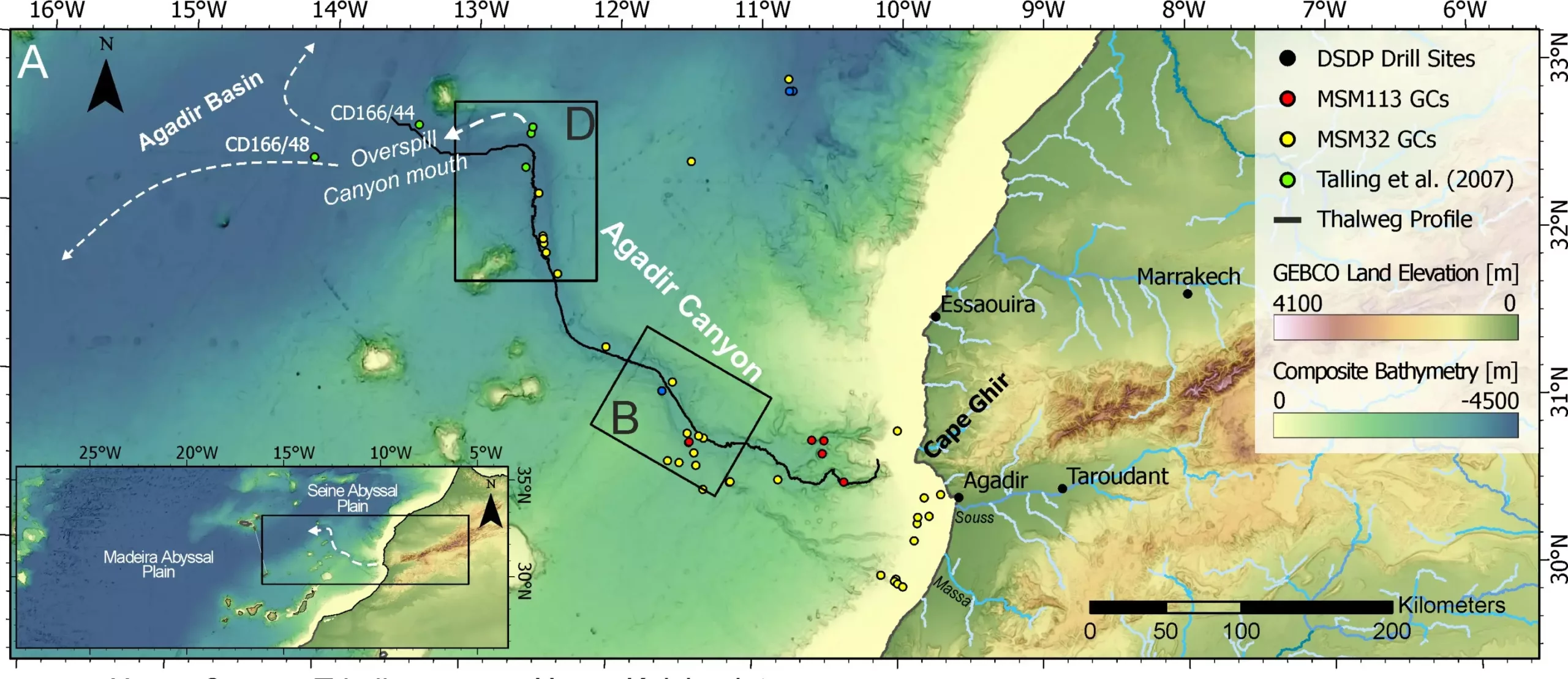The discovery of a colossal underwater avalanche in the Atlantic Ocean has opened new avenues for understanding one of nature’s most enigmatic phenomena. Research from the University of Liverpool has detailed a significant event that occurred nearly 60,000 years ago in the Agadir Canyon, situated off the northwest coast of Africa. This groundbreaking study, titled “Extreme erosion and bulking in a giant submarine gravity low,” published in the journal *Science Advances*, highlights not just the event’s geological impact but also its consequences for modern infrastructure and environmental safety.
The underwater avalanche investigated by the research team began as a modest 1.5-kilometer volume seafloor landslide. Remarkably, it expanded over 100 times in size as it traversed the canyon, collecting vast amounts of sediment, boulders, and an array of marine materials in its wake. This escalation resulted in a formidable force of nature that carved a channel across approximately 4,500 kilometers of ocean floor, bearing witness to the sheer power of geological processes. The avalanche’s capacity to transport large cobbles over 130 meters upward along the canyon’s edge is an astounding revelation, highlighting the extraordinary dynamics at play beneath the ocean’s waves.
Unlike visible terrestrial landslides or snow avalanches, underwater avalanches operate within a realm that is largely invisible and thus far less understood. Their clandestine nature makes them extremely difficult to research and measure accurately. Nevertheless, these events play a crucial role in redistributing resources across the seabed, including sediments and essential nutrients, while also posing significant geohazards to subsea infrastructure. For instance, internet cables that form the backbone of global communication are laid along the ocean floor, making them susceptible to damage from these immense geological disturbances.
To gather the data necessary for this monumental analysis, the research team employed a comprehensive approach involving over 300 core samples taken from the region over the last four decades. Integrating seismic and bathymetric data allowed researchers to effectively map the extent and scale of the underwater avalanche. This combination of methods represents a significant advancement in marine geology, enabling researchers to visualize and interact with underwater landscapes like never before.
The research team’s findings offer a stark contrast to existing knowledge about similar geological phenomena. Dr. Chris Stevenson, a leading sedimentologist at the University of Liverpool, pointed out that the growth factor of this underwater avalanche is around 100, which is considerably greater than that of typical snow avalanches or debris flows that tend to multiply by only four to eight times. The implications of this research suggest that underwater avalanches may exhibit unique behaviors that differ fundamentally from their terrestrial counterparts. This understanding invites further investigation, as future research is expected to explore the peculiarities of underwater avalanche dynamics.
The implications of this research stretch beyond geological interest. Understanding the mechanics of underwater avalanches can inform risk assessments related to crucial underwater infrastructure, including communication cables and energy pipelines. The revelation that smaller events can snowball into massive avalanches underscores the necessity for better monitoring systems to predict and mitigate the risks that these natural phenomena pose to human activities offshore.
As marine geophysicist Professor Sebastian Krastel notes, this study has compelled scientists to reassess their views on the formation of large avalanches, promoting a paradigm shift in geological understanding. The research signifies a landmark in oceanography—not only illuminating past events in the Agadir Canyon but also serving as a reminder of the ocean’s dynamic nature and the interconnectedness of marine ecosystems and human infrastructure.
This unique inquiry into underwater avalanches paves the way for future exploration and emphasizes the need for ongoing investigation to unveil the deeper mysteries of our oceans. By recognizing the significance of these geological events, researchers can better prepare for and potentially mitigate the impacts they may have on our increasingly reliant technological society.


Leave a Reply